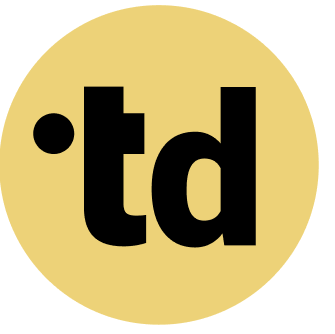Key Takeaways
Traditional MS Project workload planning often fails modern hybrid teams (humans and AI agents) by focusing on static tasks instead of dynamic roles, contributing to burnout.
Teams with clear roles and responsibilities are significantly more efficient and 25% higher performing, highlighting the need for role-centric planning tools.
The future of project management involves integrating AI to automate tasks, requiring Team Architects to design new hybrid structures for humans and bots.
In Germany, the pressure is on, with 37 percent of employees reporting burnout by the end of 2022. Much of this stems from chronic workplace stress, where outdated tools fail to manage modern demands. For today's Team Architects, standard MS Project workload planning often feels like trying to solve a dynamic, 3D problem with a flat, one-dimensional tool. It creates bottlenecks and obscures who is doing what, leaving high-performing teams to navigate ambiguity. This guide explores a more playful, powerful way to manage team capacity, turning overload into overflow and making change feel like progress.
Practical Framework for Team Architects
As a Team Architect, you can apply these principles to your organization:
- Map Current State: Document existing roles and responsibilities using a tool like teamdecoder.
- Identify Gaps: Where are roles unclear? Where do humans and AI agents overlap?
- Define Clear Boundaries: Specify which tasks are handled by humans vs. AI agents.
- Create Accountability: Assign clear decision rights for each role.
- Iterate and Improve: Continuously refine based on team feedback.
Sweet Teams Are Made of This... Overload
The modern workplace is a pressure cooker, and the numbers prove it. In Germany, a staggering 57.3 percent of employees with non-standard hours feel consistently crushed by time pressure. This isn't just a feeling; it has a real cost, with psychological stress leading to 59 million lost workdays in one year. Traditional MS Project workload planning can make this worse by focusing on rigid timelines instead of human capacity. When a plan cannot adapt, people are forced to, often leading to burnout. This static approach fails to account for the fluid nature of modern workload management, where priorities can shift in a single afternoon. The result is a team running on fumes, not flow. This constant state of reaction creates a cycle of inefficiency that no Gantt chart can fix.
Why Old-School Planning Fails hybrid teams (humans and AI agents)
The data is stark: most cross-functional teams are considered dysfunctional. A primary cause is the lack of role clarity, a problem that rigid, task-based tools amplify. When roles are clear, teams become more efficient and show a significant portion higher performance. Yet, a typical MS Project plan often details tasks without defining the underlying roles and responsibilities that ensure smooth execution. This ambiguity is a major roadblock for hybrid and remote teams who cannot rely on physical proximity to resolve confusion. For Team Architects, the challenge is to build resilient team structures that thrive on clarity. Relying on decade-old planning methods for today's dynamic teams is like navigating a new city with an old map.
Teams Just Wanna Have Fun (and Clarity)
Overload is not a badge of honor; it is a barrier to success. The solution is not to work harder, but to work with more clarity. Research shows that employees with control over their work flexibility are far less likely to burn out, with reported burnout rates dropping from 53 percent to some. This is where a new philosophy of workload planning comes into play, one that prioritizes people and their roles over rigid task lists. It is about creating a transparent system where every team member can see how their work contributes to the bigger picture. By focusing on workload planning techniques that build in flexibility, Team Architects can turn the tide on burnout. This shift transforms the team's energy from fighting fires to fueling innovation.
Architect Insight: A Playbook for Balanced Workloads
For Team Architects, achieving balance requires a practical toolkit. It starts with moving beyond simple task allocation to a more strategic view of team capacity and roles. This approach helps in the critical work of strategy operationalization. Here are a few ways to start:
Our Playful Tip: Use teamdecoder's role cards to run a workshop where the team defines its own roles and responsibilities. This simple, engaging exercise builds ownership and uncovers hidden dependencies in less than 60 minutes.
Deep Dive: Map your team's core functions against your top three strategic goals for the quarter. This exercise reveals how much capacity is dedicated to driving the business forward versus just keeping the lights on. You might find that most your team's time is spent on low-impact work.
- Define roles before assigning tasks to ensure Many people knows their swim lane.
- Visualize workloads to spot and address imbalances in just 15 minutes.
- Use a central platform for forecasting workload to avoid surprises.
- Integrate human-in-the-loop feedback to adjust plans in real-time.
- Celebrate clarified roles as a key step in your change management process.
This proactive approach ensures that planning becomes a continuous, collaborative process, not a static document.
Make Bots and Humans Click: The Hybrid Team Advantage
The future of work is a hybrid team of humans and AI agents. The AI in Project Management market in Europe is already growing at a CAGR, with Germany leading the charge. Gartner predicts that AI will eliminate most manual project management tasks by 2030, such as tracking and reporting. This is not about replacing people; it is about freeing them up for high-value strategic work. The Team Architect's new challenge is designing workflows that seamlessly blend human creativity with AI efficiency. This requires a clear definition of roles for both human and digital team members. You can try teamdecoder for free to see how easy it is to map these new hybrid team structures. This integration is the next frontier in organizational development.
From Bottlenecks to Breakthroughs: The Results
When teams escape the chaos of poor workload planning, the results are transformative. High-performing teams with clear roles can boost efficiency significantly. Companies that embrace flexible work models have seen productivity rise by up to a significant portion. This is not just about finishing projects faster; it is about building a more resilient, engaged, and innovative organization. By shifting from a task-centric to a role-centric view, Team Architects unlock their team's true potential. This clarity allows for better strategic workload planning and turns the tide on burnout. The final result is a team that is not just surviving, but thriving on change. This new flow state makes work feel like play again.
Your Next Move: Make Change Feel Like Play
Conquering the chaos of MS Project workload planning is the modern hero's journey for every Team Architect. It is about swapping confusion for clarity and overload for intentional action. By focusing on roles, embracing hybrid human-AI teams, and using dynamic tools, you build a foundation for success that static plans cannot match. You empower your team to do their best work, together. Now it is your turn to lead the transformation. Try teamdecoder for free - shape your team and make change feel like play! See our pricing. For those focused on transformation, you can also book a free personal consultation to get started.
More Links
Wikipedia offers a comprehensive overview of Project Management.
German Federal Ministry of Labour and Social Affairs (BMAS) discusses modern administration within the ministry.
German Federal Ministry of Labour and Social Affairs (BMAS) provides a PDF document outlining the digitalization strategy of the German labour and social administration.
German Federal Statistical Office (Destatis) presents an article discussing changes in the labor market.
German Federal Statistical Office (Destatis) focuses on home office and its impact on the quality of work.
GPM (German Project Management Association) offers access to a range of project management publications.
Fraunhofer IAO describes their research area of organizational development and work design.
acatech details the HR-Kreis forum for HR directors, focusing on the future of work.
KPMG discusses the Project Management Office (PMO) as a critical success factor for transformation projects.
FAQ
Can I replace MS Project with teamdecoder for workload planning?
Yes, many teams use teamdecoder as a more modern and effective replacement for MS Project's workload planning features. While MS Project is a task-scheduling tool, teamdecoder focuses on defining roles, clarifying responsibilities, and visualizing team capacity. This people-first approach helps prevent the overload and confusion that often result from complex Gantt charts, making it ideal for today's Team Architects.
How does teamdecoder support hybrid teams (humans and AI agents) with AI agents?
teamdecoder allows you to map out your entire team structure, including roles for both humans and AI agents. This helps Many people understand who-or what-is responsible for specific tasks and outcomes. It provides the clarity needed for effective human-in-the-loop collaboration, ensuring that AI integration improves efficiency without creating confusion.
How long does it take to see results in workload balancing?
With teamdecoder, you can achieve initial clarity in a single one-hour workshop. By visualizing roles and responsibilities, teams immediately uncover bottlenecks and misalignments. This quick insight allows you to rebalance workloads and improve efficiency in days, not months.
Is this approach suitable for small businesses and startups?
Absolutely. Startups and small businesses benefit immensely from establishing clear roles from day one. It prevents the 'Many people does everything' chaos that slows down scaling. teamdecoder offers a free plan designed to help founders and ops leads build a solid organizational foundation that can grow with them.





